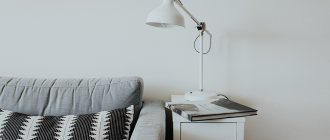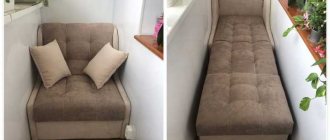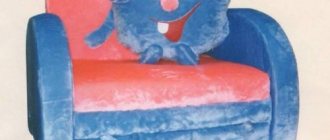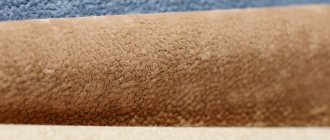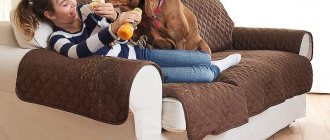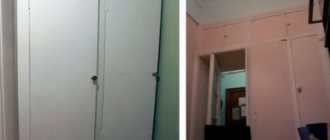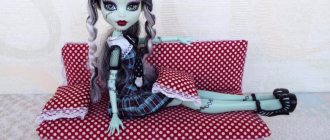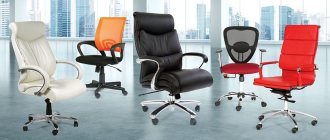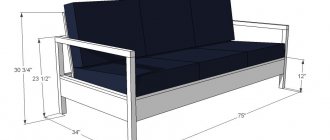Benefits of restoration
Many citizens are suspicious of restoring old furniture, although it has a lot of undeniable advantages. These include:
- saving money;
- independent choice of design;
- preserving memories associated with an antique item;
- improvement of weak points of the design to increase ease of use.
Budget savings
The main plus for which many decide to restore the sofa. Updating parts that have exhausted their service life costs much less, and the remaining money can be spent on more pleasant needs.
Antique Preservation
Old, antique things have always been valued. Why throw away a good, sturdy sofa that has a lot of memories attached to it? It’s easier to refresh its appearance and continue to use it for your pleasure. Perhaps in the future, the money saved on buying a sofa will be better used.
Choice of colors
When purchasing new furniture, the problem of choosing the right color scheme that harmoniously fits into the current interior of the room often arises. In case of restoration, it is much easier to buy fabric of the desired color, and this saves not only money, but also time.
Independent selection of material according to quality
Another undoubted advantage is the ability to choose the quality of the material used for restoration. An old sofa can be covered with more expensive fabric, which will significantly increase its appearance. At the same time, the price of a new product made from the same material will be many times higher.
Strengthening weak points
Buying new furniture always carries the danger of unexpected defects or design flaws that reduce the ease of use. All the disadvantages of old furniture are already known and they can always be eliminated by purchasing a couple of extra parts. This way you will update the appearance and strengthen the structure as a whole, with a minimum investment.
Spring block repair
Restoring the spring block
A serviceable spring block determines the absence of sagging of the sofa and its comfort. It consists of zigzag springs and fastening to the body in the form of arched profiles-brackets.
Materials and tools for repair.
- Screwdriver and screwdriver.
- Construction stapler and staples.
Sequencing
- Disassemble the sofa into elements.
- Carefully remove the upholstery.
- Remove the filler and backing.
- Loosen the tension on the faulty spring and replace it.
- Reassemble in reverse order.
Adviсe
- If many springs are faulty, it is better to replace them as a whole unit.
- Replacing the rubber bands in the back is done in the same way.
Furniture manufacturers are increasingly moving away from springs in favor of slats. The change process is the same.
Design
The advantages of restoration are more or less clear, now it’s time to understand the design of the sofa. This will allow you to determine the importance of a particular part, the amount of work to be done and the approximate cost of repair.
Frame
The basis of the structure, which bears the heaviest loads. Try not to purchase products made from chipboard. They are too fragile and quickly become unusable. A good frame is expensive, but the service life of such furniture is much longer.
Spring block base
An important detail responsible for ease of fit. If it is damaged or fails, the structure becomes inconvenient to use, and its working life is exhausted faster than usual.
Spring block
The spring block base provides the seat with elasticity and comfort. If it fails, the sofa will begin to make creaking sounds, wear out faster and spoil the upholstery from the inside. You shouldn't let your furniture get into this state. Timely repairs will solve many problems and contribute to further savings.
Felt or thick fabric
Felt is a natural material used in the assembly of sofas. Felt, or thick fabric, is used in old-style sofas as a protective layer and there are usually no problems with replacing them.
Polyurethane foam
Cheap and durable filler, widely used in the furniture industry. Polyurethane foam comes in two types:
- block;
- cast.
See also
How to replace a light switch in an apartment, installation and connection
Note! To fill sofas, polyurethane foam is used, the density of which ranges from 30 to 40 kilograms per square meter. Fillings with a density below 30 kilograms are used only for the manufacture of decorative pillows.
Sintepon.
Synthetic filler made from non-woven fabric. It is used in budget designs due to its low cost.
Most often, it is not used as a basis for filling upholstery, but is combined with other, higher quality materials.
Upholstery fabric
The upholstery fabric is responsible for the decorative properties of the sofa and protects it from external influences. The higher quality and more expensive the upholstery, the longer the furniture retains its fresh, presentable appearance. There are a large number of materials for these purposes - you will always have plenty to choose the best option from.
WHAT DO YOU NEED TO REPLACE A SOFA UPHOLSTERY WITH YOUR OWN HANDS
The process in question requires careful attention - the work is quite painstaking, so all the necessary tools and devices must be prepared in advance.
What you may need:
- Wrenches, screwdrivers and pliers - you will definitely have to disassemble the sofa, which is impossible to do with your bare hands.
- Side cutter and anti-stapler - these tools make it very easy to remove old sofa upholstery, but if additional financial costs are not provided, then you can get by with an ordinary knife and scissors.
- Large scissors, a small bar of soap (“soap”), thread and a sewing machine - this is all you need to work with the selected upholstery material. It is better to choose special tailor's scissors - they are very convenient for cutting even thick fabric; with soap you can ideally make markings along the line of the future cut.
And, of course, the actual upholstery material is the one that was chosen in accordance with the requirements.
Kinds
The complexity of restoring a sofa and its final cost largely depend on the type of furniture. Some models can be repaired quickly and without problems, while others will require a lot of resources. Let's figure out what types of sofas exist and what to expect if they break down.
Accessories
Regardless of the design of the sofa, the fittings are considered as a separate item. It consists of auxiliary structural elements, which also wear out over time. Sofa accessories include:
- legs;
- wheels.
They come in different sizes and shapes, and strength often depends on the material of manufacture.
Book
Comfortable and practical sofa models that have been popular since Soviet times. Pros of a sofa book:
- variability. Can be used as a sofa and as a bed;
- when assembled it has compact dimensions;
- has additional sections in which you can store bed linen or things.
Minuses:
- It cannot be placed close to the wall, since in this position it cannot be disassembled.
Eurobook
The sofa from the Eurobook series is considered a leader in terms of structural strength. This effect is achieved due to the simplicity of the design, which reduces the possibility of breakdown to a minimum. Advantages:
- easy to disassemble and assemble;
- large selection of sizes and shapes;
- no need to move away from the wall if there is a need for additional bed space.
Flaws:
- the price is higher than that of a book sofa.
Eurobook "Tick-tock"
The difference from the basic model is the mechanism for converting the sofa into a bed. You won't have to pull out the folding module, scratching the floor covering. The transformation process is carried out by weight, which makes the procedure silent and practical.
The only drawback of this design is the need to remove special pillows during transformation, which come with the sofa.
Accordion
A compact and practical sofa, which got its name because of the mechanism of transformation into a bed, reminiscent of the bellows of an accordion. Advantages of the model:
- small dimensions when folded;
- high orthopedic qualities;
- ease of use.
Flaws:
- There are many complex parts in the mechanism, some of which rub against each other during transformation. This significantly increases wear on the upholstery and the structure itself.
Click-clack
A type of sofa-book, equipped with a modified disassembly mechanism. The model has three working positions:
- sitting position;
- lying position;
- "chaise lounge" position.
The name comes from the characteristic sounds made by the furniture during transformation.
Dolphin
Universal furniture with an elongated corner part. It is used in the interior of spacious living rooms, but if necessary, it fits harmoniously into small rooms. Advantages of the model:
- the sleeping place is level, without changes;
- easy to disassemble and assemble.
Flaws:
- If low-quality, cheap materials are used during the assembly process, the product will quickly become unusable.
Materials
When buying a sofa, first of all, pay attention to the upholstery and filling. These materials are most subject to mechanical stress, which reduces the shelf life of the product.
Polyurethane foam
A material with high strength and low price. Not used as a main filler. In most modifications of sofas, both old and new, polyurethane foam acts as a gasket, combined with other fillers.
Holofiber
Synthetic material with the following distinctive features:
- Easily restores its original shape due to the porous structure of the substance.
- No harmful chemicals are used in the production process, making the material classified as environmentally friendly.
- Lasting.
- Long lasting.
Flaws:
- It requires proper care, otherwise it quickly loses its properties, becoming unusable.
Sintepon
A common synthetic material used, among other things, in the production of furniture. Among the advantages of synthetic winterizer are:
- cheap;
- when deformed, quickly returns to its basic shape;
- The fibers of the material are strong and, under strong impact, do not tear, but stretch.
See also
How to hang a chandelier on a suspended ceiling with your own hands, mounting rules
Minuses:
- may have a negative impact on health if manufactured using the adhesive method;
- When rubbed, it creates a static charge of electricity.
Vatnik
Used as flooring, combined with other fillers. Material Features:
- soft, pleasant to the touch;
- does not harm health;
- cheap;
- allows air to pass through well.
Flaws:
- not suitable as the main filler, since the fabric fibers have low elasticity. Because of this, a product made from quilted jacket does not restore its original shape well, which affects its appearance.
Periotec
Non-woven material of increased comfort, used as a filler in:
- mattresses;
- furniture;
- pillows;
- blankets
Pros:
- quickly recovers even with repeated deformation of the canvas;
- makes the furniture more comfortable;
- hypoallergenic;
- allows air to pass through well.
Flock
Textiles that have undergone chemical treatment, the front side of which is covered with a small pile. Many people confuse it with velor. Advantages:
- dense;
- soft;
- increased wear resistance;
- allows air to pass freely.
Negative qualities:
- substances that contain alcohol have a destructive effect on flock;
- highly electrified.
Velours
A budget alternative to velvet, used in the production of room furniture. It has a pleasant, soft fiber structure. The material is dense, which increases its wear resistance.
Jacquard
Expensive material made from various fabrics. Its main feature is considered to be its exceptional appearance and labor-intensive manufacturing process. A product covered with jacquard will decorate any home.
Chenille
A type of jacquard fabric that differs from regular fabric in the complexity of the thread weaving. Used for upholstery:
- chairs;
- armchairs;
- sofas
Tapestry
Fabric for upholstery, the threads of which are intertwined in a special way, creating a certain pattern on the surface of the material. Among the advantages are:
- beauty;
- durability;
- wide selection of colors and patterns.
What you need to reupholster a sofa
To reupholster a sofa, you need to prepare some materials and a standard tool that almost every man has in his bins. The only thing that stands out from the standard set is a furniture stapler, which can be pneumatic, mechanical or electric. The first requires a compressor with a receiver, which is not worth purchasing just for the sake of tension alone. Mechanical samples are self-contained and relatively cheap. An electric stapler is very convenient to use, but requires a power supply.
In addition you will need:
- Screwdrivers, straight and figured. Having a screwdriver with a set of attachments and bits will significantly speed up the work.
- Open-end wrenches for 12, 14, 17, 19.
- Hammer.
- Pliers and side cutters.
- "Gypsy" needle and nylon cord.
The choice of materials for upholstery should be discussed in more detail.
Choice of upholstery fabric
Materials should be purchased as needed. In some cases, it is enough to simply sew up the upholstery, (if there is minor damage) wash it and re-stretch it over the soft part of the product. How to sew a sofa with your own hands? It’s very simple: you need to remove the upholstery, put a patch on the inside of the damage, after which the cut can be reused.
If the upholstery has become unusable, then fabric will be needed to sew the cover. Choosing a material for upholstery is a very difficult process, because each fabric has certain properties and characteristics.
Among the most common upholstery materials are:
- Velor is a natural material that contains wool and cotton. It is highly decorative, has a high margin of safety, and is practically not deformed. Disadvantages: short service life, tendency to wear and burn out.
- Flock is easy to clean, so it is perfect for a home with children and pets. Durable and hypoallergenic material with low wear resistance.
- Shinil is a very decorative, durable and durable material that does not deform during use. Disadvantage: low water resistance.
- Tapestry is an exquisite material with high strength and abrasion resistance. The disadvantage is the high stretch coefficient, which creates certain difficulties when upholstering a sofa with your own hands.
- Jacquard is distinguished by high levels of strength and decorativeness. Disadvantage: low water resistance.
Among the large number of upholstery fabrics presented on the domestic market, one cannot fail to mention various options for leatherette. These materials have excellent strength characteristics, resistance to moisture and abrasion, and ease of use. The disadvantage of all leather substitutes is flammability and deformation when exposed to high temperatures.
As noted above, the following can be used as a sofa filler:
- Polyurethane foam is a synthetic porous material with different densities. During operation, it loses its elasticity and elasticity. To fill furniture, you should choose a material with a density of at least 30 kg/m2.
- Sintepon is an inexpensive synthetic non-woven fabric with good elasticity. It has a short operating period.
- Periotek is a modern non-woven material with high strength and elasticity. Perfectly restores its shape even after prolonged deformation.
- Struttofiber is a high-strength and elastic material that does not rot and does not absorb moisture and can withstand heavy loads.
- Batting is a fabric made from technical cotton wool. Due to its high density, this material is used to protect against the effects of springs.
- Pressed felt is a natural fabric that is used as protection for spring blocks. Used with fillers of lower density (foam rubber, polyurethane foam, etc.).
In addition to the above materials, modern sofas can use holofiber in the form of a mat, which perfectly retains its structure when deformed. The most common material used in classic sofas in the budget price segment is foam rubber. Of all the fillers, foam rubber is the most short-lived and cheapest material.
Since sofas are subject to intensive use, experts do not recommend using foam rubber as the only filler.
Required materials and tools
In a situation where you decide to restore the sofa yourself, do not forget to prepare properly. For repair you will need:
- electric jigsaw;
- construction adhesive;
- stapler for furniture;
- screwdriver;
- pliers;
- upholstery material and filler.
Tapestry, velor or suede
Professionals who have been involved in furniture restoration for a long time advise choosing one of the following materials for upholstery:
- tapestry;
- suede;
- velours.
They have the best characteristics in their price segment, and everyone will find an option to suit their pocket.
Simple plain fabric
Used to create a fastening cover. Any fabric you can afford will do.
Special furniture foam rubber
Used as a filler for a sofa. It is considered the best option in terms of price and quality ratio. If you have broad financial capabilities, you can purchase other, more expensive material.
Thick fabric
Thick fabric, such as carpet, is used to protect the box spring. You will need a large piece of fabric, since protection is required on both sides.
Note! Try to buy high-quality materials, otherwise another restoration will soon be required.
Construction adhesive
Glue from any manufacturer will do. During the restoration process, no more than one tube of the substance will be useful, so there is no need to make large supplies. Glue is used to carefully fix the material.
Furniture stapler
A furniture stapler is used to secure the upholstery of a sofa. The stapler must come with at least one clip of staples.
If you don’t have a stapler, you’ll have to buy it in a store or ask your neighbors for the tool.
Durable nylon thread
A sofa cover made from the upholstery material of your choice will be sewn with nylon thread. The thread should come with a strong needle.
Spanner, pliers and screwdriver
They will be useful when working with the mechanical parts of the sofa, in case of replacement or adjustment. Any set of these tools sold at a hardware store will do.
Jigsaw
An indispensable thing when working with wooden parts of the sofa. If you need to saw off, trim or correct something, you won’t find a better tool.
It is advisable to purchase it for permanent use, as it will come in handy many times in the future.
Sofa restoration: how to update an old sofa yourself
Sofa restoration: how to update an old sofa yourself
If the upholstered furniture no longer suits you because it is dilapidated or outdated in appearance, you don’t have to buy a new thing; you can restore the sofa yourself
.
Let us immediately note that to update a sofa you need to have at least some skills in working with tools and a sewing machine. In this case, even if you use other technologies, the result may turn out quite good. But if you don’t even have basic skills, then you shouldn’t bother updating your sofa yourself, especially if the model is complex or expensive.
To restore a sofa, you will need tools that you need to stock up on in advance:
- Kit screwdrivers
(flat and cross), which are used to remove old fasteners;
- Hexagonal keys
, if the structure has bolted connections;
- Side cutters, wire cutters, jigsaw;
- Building stapler
and paper clips for securing new upholstery or a shoe hammer and furniture nails;
- Sewing machine
, tailor's scissors, chalk or marker, thread to match the fabric, needles.
Sofa Claire 1
This is a compact sofa with a roll-out transformation mechanism. The upholstery is made of chenille. The mattress is based on high-quality polyurethane foam. There is a box for bedding.
Sofa Assol 4
This is a practical sofa for a small room or cottage. It is possible to use the sofa as a bed. The frame is made of laminated chipboard, plywood, coniferous and birch timber.
Sofa Bene 1
This is a laconic design and a combination of straight and rounded lines, a combination of similar colors, and the absence of pretentious elements. The color highlight of this model is the contrasting pillows.
Stages of reupholstery
Reupholstering an old sofa must go through 5 stages in sequence:
1. Dismantling the sofa
into individual elements: pillows, backrest, sides, etc.
2. Removing
old upholstery 3. Cutting out new upholstery 4. Upholstery 5.
Assembling
the sofa.
If the “track record” of the furniture is more than 7 years old, you will have to update not only the upholstery, but also the springs, elements of the back or sides.
Let's consider each stage separately.
Stage 1. Disassembly
To properly disassemble an old sofa, use the instructions or photos of this model
, which you can find on the Internet. Usually the back is removed first, then the sides and seat.
If the back was made of chipboard, then we look for places where the material has crumbled and remove these pieces
.
Using a pencil and a ruler, we mark out a patch made from a new piece of chipboard, thinner than the main one. The patch area should be slightly larger than the old size. Use a jigsaw to cut out two identical patches
.
We attach the backrest to the screws, and on each side of the backrest we attach patches to the same screws. Then we tighten this “pie” with nuts. At the same time , we tighten all other screws and bolts
that have become loose during the use of the sofa.
Stage 2. Removing old upholstery
Using a side cutter, an anti-stapler and a screwdriver, we separate the old upholstery
. Your goal in this case is to preserve the old material as much as possible. If this can be done, you will receive excellent patterns for new patterns.
At the same time, consider springs or other frame fillers
. If the filler is worn out, it is better to replace all or the worn part.
Stage 3. Pattern
We make new patterns by applying old upholstery material to the fabric. Pay attention to how much seam allowance was given, and sew the elements taking into account this distance.
It is best to draw a chalk line for the future seam along the old marks, baste it, and then sew it where necessary.
You need to cut it out taking into account the pattern and direction of the pile.
If the pattern of the new fabric is small, then no adjustment is required; a large pattern may require combining decorative elements, so the fabric consumption will be greater.
Choose fabric taking into account the design of the room and the type of filling.
If the “filling” of the sofa is foam rubber, then for the upholstery you should choose a fabric with a medium thread tension. If there is cotton wool or fluff inside, then the fabric should have good stretch. For a spring seat, you can choose dense fabrics.
The most popular fabrics for upholstering upholstered furniture are tapestry, jacquard and velor.
They look great, are practical to care for and easy to process.
Find out about the density of fabrics when purchasing or online. Avoid rough fabrics
, even if you like the design. It's hard to work with them.
A combination of companion fabrics will decorate your sofa
, but will require more skill, and it is better for beginners not to mess with leatherette; it is so different in quality characteristics that only an experienced person can find a “common language” with it.
Stage 4. Tightening
Here you will need a mechanical stapler
.
We fold the fabric on one side and fix it with staples to the wooden frame. If there is an edge, there is no need to tuck it.
Place the staples at intervals of 3 cm, the direction of the staples is perpendicular or parallel to the edge. Having secured the fabric on one side, we move to the opposite edge. You can first staple the upholstery with 3-4 staples to make sure that it lies flat without moving, and then pass the staples around the entire perimeter.
Before final sealing the cutting sides, fold the corners inward
.
If the corners cannot be stapled, sew them carefully with a blind stitch by hand. It is very important to stretch the fabric evenly
so that there are no wrinkles on the surface in the future. Similarly, you need to update all other parts of the sofa.
Stage 5. Assembly.
Assembly is carried out in the reverse order of disassembly.
Be careful not to confuse the left and right parts. If this is important, then it is better to mark them during disassembly. Take a photo of your new sofa and see how good it is!
Sofa Charm
This is a stylish sofa with a roll-out mechanism. Upholstery in fabric with eco-leather. The Charm sofa will decorate your living room or bedroom. Made from timber and chipboard.
Sofa Carmen
Sofa with a roll-out mechanism Carmen - blue Verona - is a bright sofa for the bedroom or living room. Can be used as a bed. The frame is made of laminated chipboard, plywood, coniferous and birch timber.
Furniture hypermarket "H EGGI" wishes you good luck!
Instructions
After all the materials for restoration have been purchased and the tools have been prepared, it’s time to move on to the repair itself. This process is not complicated, you just need to be careful and consistently follow all the steps described in the instructions.
Checking and repairing upholstered furniture frames
The first step in restoring a sofa is to check all its components for integrity and functionality. If any boards are rotten or cracked, try to replace them.
This approach will allow you to properly repair old furniture, after which it will serve for many more years.
Dismantling and inspection
After checking the frame, the process of dismantling individual structural elements begins, such as:
- armrests;
- sofa backs;
- upholstery;
- filler;
- springs
See also
How to properly plaster window slopes with your own hands
Side armrests
In most models, the fastener is located on the inside, and to get to it you will need:
- hex socket wrench;
- pliers.
If these tools are available, there will be no difficulties with dismantling.
Seats and backrests
The seats and backrests are fixed using special fasteners to the lower frame of the sofa. The tools you prepared before starting the repair of the product will help you cope with the fasteners.
Old upholstery, staples
The old upholstery is attached to the wooden parts of the sofa using special staples. They must be carefully removed, after which removing the upholstery will not be difficult.
Old filler
Once the upholstery is removed, access to the sofa filling will open. It is advisable to immediately replace it with a new one, but if it is in acceptable condition, you can leave the old filling.
Springs, checking their condition
Once the filler is removed, we move on to evaluating the springs. If the inspection result shows a satisfactory condition, it is enough to clean and coat the old parts with lubricant.
If some springs are damaged, be sure to replace them with new ones.
Checking the condition of the chipboard
Often it is the chipboard sheets that become unusable first. Replace damaged parts of the structure or leave the old ones if their condition allows reuse.
Repair and replacement of old elements
After all the components of the sofa have been dismantled, you can proceed to repair and replacement of old parts. Subject to inspection:
- base for a spring block;
- spring block;
- mechanisms responsible for disassembling the sofa;
- slats.
Spring block base
The base for the spring block is completely changed if any defects or malfunctions are detected. Fastening to the block is carried out using a stapler. If you couldn’t find a stapler, take:
- thin cloves;
- steel wire.
We make brackets from them and attach the springs.
Spring block
To repair a spring block, you must:
- replace faulty springs;
- cover each side of the block with thick fabric, which is attached to the part using a nylon thread.
Note! The edges of the fabric are folded inward.
Case and cover
Fastening the cover and covering the frame with upholstery is carried out using construction glue and a stapler. Don't forget to return the old filler or replace it with a new one.
Mechanism repair
Repairing sofa mechanisms has its own nuances, depending on which operating principle is used:
- folding;
- roll-out
In roll-out ones, the roller most often fails, and in folding ones, the springs fail, which over time lose their shape and burst.
Lamels
Reasons for lamella failure:
- poor quality of material;
- high load on a separate section.
Damaged strips are bent until they completely come out of the fixing grooves, after which a new part is installed in their place.
How to remake furniture at home?
Just follow the instructions:
Stage I: we begin restoring furniture by disassembling it, which involves unscrewing and removing locks, as well as detaching old staples that were needed to secure the upholstery to the frame. Be sure to keep trash bags on hand to immediately remove dust and previous litter.
Stage II: carrying out repair work and replacing parts that have become unusable. In fact, restoring an old but beloved sofa is possible if you select the right spare parts. If you notice that cracks have appeared on the beams that form the frame, this indicates that their useful life has come to an end. Replacement should be carried out by choosing solid beams. If desired, you can order them from a carpenter or prepare them yourself. In order for the alteration to be carried out efficiently, the joints of the beams should be registered using PVA glue. If you notice broken parts, you also need to repair them or install new ones by cutting them out with a jigsaw.
For their subsequent fixation, the master uses nails or a pneumatic stapler. This tool will be needed if you decide to return the furniture to its original appearance. Springs often break during operation. We repair them by completely replacing the blocks. Sometimes this is the only solution that is suitable for bringing the seats of your favorite folding beds back to normal.
Stage III: replacement of the filler, which is often foam rubber. Over time, it cakes and becomes unsuitable for further use. We restore the seat by removing the old material and covering it with new. How to restore the seat? Only in this way, although it can be done easier by leaving the same filler if it is in good condition.
Decoration
Decorating the sofa is done using:
- creating beautiful pillows;
- carriage screed;
- figured solid wood.
Beautiful pillows
Pillows are made independently, from leftover material, or purchased in a store. It all depends on your financial capabilities.
Carriage tie
The back of the sofa is decorated with a carriage tie. To do this, small circles are cut out of the foam rubber during stuffing, after which buttons will be sewn in their place. This will help prevent the material from curling. Afterwards the frame is covered with fabric and decorative elements are sewn on.
Figured wood
Wooden armrests can be decorated by gluing solid wood onto them. Such a sofa will look much more beautiful and will last longer than usual.
New cover for an old sofa
Purchasing a new cover is one of the easiest and fastest ways to update your sofa. It will help hide all flaws and defects. Finished products are sold as furniture in standard sizes. If the sofa does not fit this category, then you can order individual tailoring in a specialized sewing workshop for specific dimensions. One of the undeniable advantages of these products is the ability to wash them in case of contamination.
Measurements
Before purchasing or ordering a cover, you should take some measurements of the furniture using a measuring tape. The following data is required:
- the length of the widest part of the sofa: back or seat;
- armrest length;
- seat depth;
- seat height from floor;
- length of protruding sectors on corner sofas.
Next, according to the available data, you should make a pattern. It is better to draw it in a reduced size on special graph paper, since a large amount of paper or film is needed to create a pattern of original sizes. It is also better to think about the consumption of fabric and the location of patterns in advance, this will allow you to manage the material wisely.
Selecting fabric by type and color
It is better to select the fabric for the cover taking into account its performance characteristics. You should have a good understanding of the purposes for which the furniture is used and where it will be placed. The color of the fabric is chosen by the owner of the sofa, taking into account personal taste preferences. Properly selected fabric and a well-sewn cover can make a sofa a real highlight of the room. Or, conversely, you can make it invisible, allowing you to increase the emphasis on other interior items. Skilled craftswomen can knit a cover.
Sewing
There are no special tricks in sewing this product. When cutting out parts, especially if there are a lot of them, it is better to make symbols in order to follow the order of their stitching in the future. Sew the parts together on a machine using thick threads and a thick needle. Next, turn the product right side out and place it on the sofa. You can come up with a variety of decorative elements and decorations. Many craftswomen can knit a cover from beautiful, eye-catching yarn.
Features of choice
When choosing fabric for lining and padding, it is worth considering some nuances, which we will discuss below.
Upholstery fabrics
When choosing your upholstery fabric, keep the following details in mind:
- the fabric should be easy to clean from dirt;
- the fabric should look attractive;
- Resistant to exposure to ultraviolet radiation and moisture.
Filler
When constantly using furniture for its intended purpose, choose:
- latex;
- durafil;
- spring block;
- holofiber.
Removing the upholstery
Thus, the sofa is completely disassembled, you can begin to remove the old upholstery from it. This is done using a flat-head screwdriver and pliers, which are used to engage the ends of staples or nails, or using an anti-stapler.
We put the old covers aside and don’t throw them away until we cut out new ones, as they will become patterns for them. After removing the upholstery, we remove the old foam or batting filling, leaving only the spring block.
Possible breakdowns
All sofas are divided into monolithic and folding. The first ones consist of several structural elements:
- frame - made of solid wood, metal or chipboard;
- soft base - spring block, latex, padding polyester or foam rubber;
- upholstery - external finishing is made of textiles, genuine leather, leatherette.
The design of folding sofas includes the same elements, and is also equipped with transformation mechanisms, which are designed to quickly organize a full-fledged sleeping place. The most popular device options: “book”, “eurobook”, “accordion”, “click-clack”, “dolphin”.
Monolithic and folding sofas can fail, break or lose their presentable appearance. The list of the most common breakdowns of upholstered furniture includes:
- Squashed seat. The problem arises due to the deformation of the filler. To eliminate it, it is replaced with a new one, using special furniture materials with a thickness of 40 mm or more.
- Damage to the mechanism. As a result, the sofa does not fold out or is difficult to transform. Problems arise due to careless handling and poor quality of equipment. Repairs are carried out by replacing damaged parts or the entire device.
- Problems with the spring block. You can tell if the filling needs to be replaced by the characteristic signs of breakdown: squeaking sounds when you press on the seat, bulges and depressions on the surface. Furniture repair involves repairing or replacing elements.
- Frame damage. When the furniture has collapsed in the middle, it is necessary to disassemble the structure and make a new part instead of the broken one if the base is made of wood. Elimination of problems on a metal product is carried out using a welding machine.
- Upholstery wear. If the surface of the sofa is torn, dirty, or worn out, the only solution to the problem is to reupholster the furniture.
Repairing sofas with your own hands can be carried out partially or comprehensively - it all depends on the characteristics and complexity of the breakdowns. Structures that have a preserved frame are subject to restoration. This is the main element of the entire product, so there is no point in wasting time on a completely collapsed base.
Ways to get rid of bedbugs in the sofa, how to choose the best remedy
Squashed seat
Damage to the mechanism
Problems with the spring block
Frame damage
Upholstery wear

